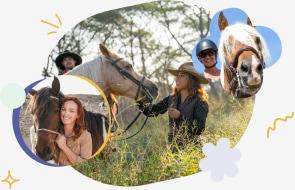Safety Rules for Tourists
Helmet & Safety Gear – Riders must wear helmets at all times while on horseback. Additional protective gear (like gloves and riding boots) is highly recommended.
Horse Handling Guidelines – Follow instructions for mounting, dismounting, and controlling the horse. Never approach horses from behind or startle them.
Trail Awareness – Stay alert to terrain changes, avoid hazardous areas, and always follow the guide’s directions.
Weather Precautions – Be prepared for changing conditions, especially in mountain passes where temperatures drop suddenly.
Emergency Procedures – Guides are trained in first aid. If an injury occurs, follow protocol for medical assistance.
Respect for Wildlife & Environment – Avoid disturbing natural habitats and follow leave-no-trace principles.
Essential Skills for Participants
While beginners are welcome, some basic skills enhance the experience:
Comfort with Horses – Confidence in handling a horse makes the trek smoother. Guides provide training, but previous riding experience is helpful.
Physical Endurance – Some treks require 4–8 hours of riding per day, which can be physically demanding.
Adaptability – Weather conditions and terrain challenges require an adventurous mindset and readiness to adjust.
Potential Risks in the Tour Program
While safety is maximized, some risks exist:
Unpredictable Terrain – Certain paths may have steep inclines or rocky surfaces requiring careful navigation.
Altitude & Weather Exposure – High elevations can cause fatigue or altitude sickness, especially in longer rides.
Horse Behavior – While trained, horses can react unexpectedly. Sudden movements or loud noises may startle them.
Remote Locations – Limited access to emergency services in deep wilderness areas means carrying essential medical supplies and practicing precautionary measures.
How Risks Are Minimized
✅ Pre-Trek Safety Briefings – Guides provide essential training on horse control and wilderness awareness.
✅ Experienced Local Guides – Trained professionals lead each trek and monitor conditions carefully.
✅ Emergency Preparedness – Satellite communication and first-aid kits ensure rapid response in case of incidents













































